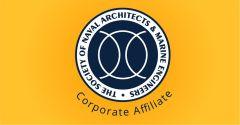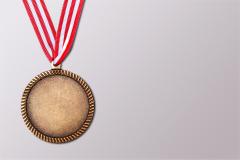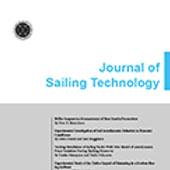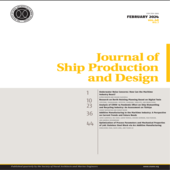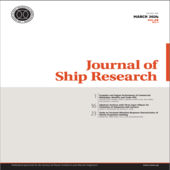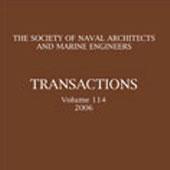Member Spotlight - Rich Delpizzo

Rich Delpizzo has over 35 years’ experience working in ship design, construction and operations, technical review, regulatory requirements application, US Navy project management and defense acquisition. He has worked for the American Bureau of Shipping at its New York, New Jersey and Washington, DC offices. In 2016, he became their Director for International Government Services, serving navies, coast guards and other government agencies throughout the world. He returned to working with US Government clients in 2019, including the US Navy, US Army, US Maritime Administration as well as selected foreign government projects.
In addition to chairing both the SNAME Ship’s Machinery Committee and Panel M-45 on Fuel Cells, he also serves as SNAME Representative to the US ISO Technical Advisory Group (US TAG). He serves on the SNAME Council and was honored as a Fellow in 2017. He has served as the ASNE (American Society of Naval Engineers) Chair of Professional Development since 2015, and was awarded the ASNE Frank G. Law Award for outstanding contribution to the advancement of the Society in 2021. He currently serves as the Chairman of SNAME Chesapeake Section. After serving in the U.S. Navy Reserve for 28 years, he retired in 2012 at the rank of Captain. Rich is a graduate of the U.S. Merchant Marine Academy.
Questions:
1) At what point in your career did you join SNAME?
Almost from the start, I think 1984 or 1985, about the time I joined the ABS office in lower Manhattan (back then ABS was located at the corner of Wall Street and Broadway). There were local meetings downtown near us, and many of my fellow engineers were members. In the 1980’s SNAME used to hold their annual conference and trade show a few subways stops away in midtown.
2) How has SNAME membership been of value to you in your career?
It actually started while I was still a student; my senior thesis was inspired by my cadet tour onboard an LNG carrier for a few months (SS LNG Libra, a ship operated by Energy Transportation
Corporation, now ETG). While researching the possibility of onboard LNG reliquification, I came across a SNAME paper from the late 1970’s on the topic. I’ve dug into that vast treasure trove of SNAME papers many times over my career. I was also very lucky to be at a company that encouraged involvement in technical societies, especially SNAME, so learned the value of going to technical meetings and meeting my industry colleagues from early on. I don’t think a week goes by without hearing from a SNAME colleague for either a new project, some aspect of technology or just catching up and sharing notes.
3) When did you know you wanted to pursue a job in the maritime field?
I always wanted to be in the military; my father served in the Army in WW II under General MacArthur, and at 98 years old continues to be an inspiration to me. Being a kid of the 60’s, I was also interested in anything about space and technology. My dad met his best friend, John Economou, while working as an oiler at a power plant in NYC; John sailed on Liberty and Victory ships during the war and taught my dad the ropes about engineering. He encouraged my dad to pursue a career as an operating engineer, and he would eventually gain his land license and work for the Board of Education for about 30 years. John also told us about Kings Point (US Merchant Marine Academy); even as New Yorkers, it’s surprising how few people know it exists only a few miles away in Nassau County. I guess the combination of an interest in military and technology, combined with John’s marine engineering background, made Kings Point and the maritime field a natural choice.
4) What advice would you give to those entering the maritime field?
Try IT. No, I’m kidding; but really, IT has a lot of potential.
Honestly, advice is very subjective and it’s hard to generalize. I was never personally interested in senior management (a casual glance at my LinkedIn page proves this); I focused more on striving to learn more, experience a broad spectrum of marine engineering disciplines and try to just do a good job. I was very, very lucky to have some amazing mentors at ABS, the Navy, SNAME and elsewhere who have been very generous sharing their time and experience. When I look back, the best parts of my career were the people I met, the things I learned and the projects we got to see completed and sailing.
5) What do you do in your spare time?
I’m sorry, I’m unfamiliar with this term ‘spare time’ you are using.
Seriously, these days I’m involved with Scouting programs, church activities and traveling a bit more for fun instead of only work.
6) What is your favorite book, movie or tv series?
Books: Hard to say, but Cry The Beloved Country (Paxton), All Quiet on the Western Front (Remarque) and The Power and the Glory (Greene) are probable contenders. I also like the ‘Big 4’ of science fiction (Asimov, Clarke, Bradbury and Heinlein).
Movies: Even tougher, but The Sand Pebbles (1966), The Third Man (1949), The Great Escape (1963) and The Dawn Patrol (1938) are up there.
TV Series: This depends on the era; up to about 10 or 12 years old it would have been Thunderbirds, Time Tunnel, or Rat Patrol (it was the golden age of sci fi and military TV). Also, any Apollo rocket launch or moon landing, no matter how many delays. Later, World at War (BBC series on PBS) and X Files (like the rest of America at the time). Now I mostly watch YouTube tutorials on how not to ruin your retirement finances (for obvious reasons).
7) What is a fun fact about yourself?
As a cadet onboard the USNS American Explorer back in 1983, I was told by the crew that it was supposed to be the sister ship of the NSS Savannah and become the first nuclear powered tanker. I mentally filed this information in the category of other sea stories, like finding the mail buoy, greasing the relative bearing and the elusive golden rivet. I later researched it and learned it was true! Built in 1958, it was intended to be the first nuclear tanker but ended up with a conventional 600# steam plant. It would later grow in reputation as the ship that broke its moorings and ran into the Florida Avenue Bridge in New Orleans during Hurricane Gustav in 2008.
Bonus fact: I was born on the day of the infamous ‘Hyphen Error’ in space exploration. Mariner 1 was supposed to be the first American project to explore Venus, but a single missing superscript bar in its programming code caused a fault in the guidance software. The spacecraft went out of control and was destroyed by ground control. Reporters at the time called it “the most expensive hyphen in history.” I found both the fact that it was called ‘Mariner’, along with it self-destructing at 5 minutes after launch, prophetic about my subsequent career.



